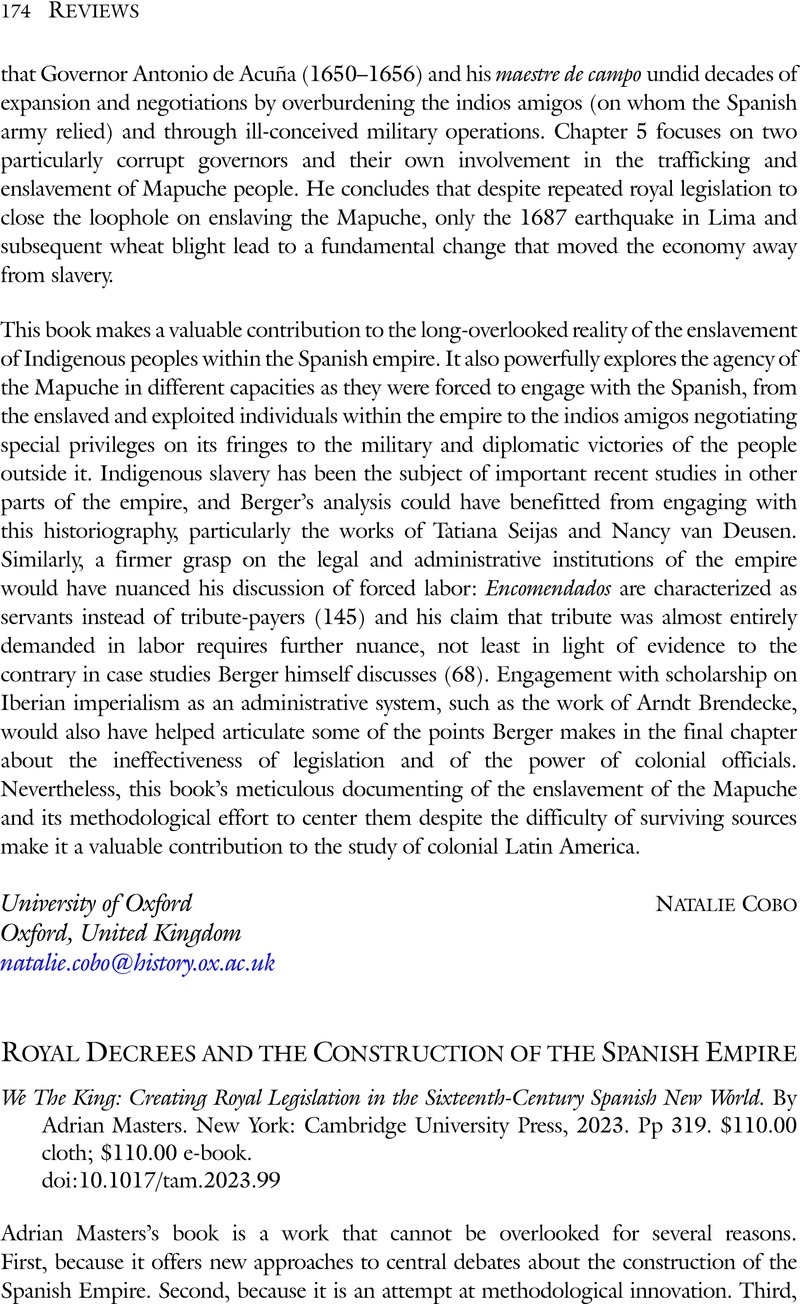No CrossRef data available.
Article contents
Royal Decrees and the Construction of the Spanish Empire - We The King: Creating Royal Legislation in the Sixteenth-Century Spanish New World. By Adrian Masters. New York: Cambridge University Press, 2023. Pp 319. $110.00 cloth; $110.00 e-book.
Review products
We The King: Creating Royal Legislation in the Sixteenth-Century Spanish New World. By Adrian Masters. New York: Cambridge University Press, 2023. Pp 319. $110.00 cloth; $110.00 e-book.
Published online by Cambridge University Press: 21 March 2024
Abstract
An abstract is not available for this content so a preview has been provided. Please use the Get access link above for information on how to access this content.

- Type
- Book Review
- Information
- Copyright
- Copyright © The Author(s), 2024. Published by Cambridge University Press on behalf of Academy of American Franciscan History


